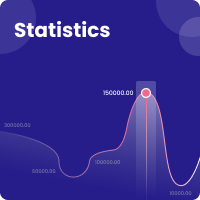Historical-epistemological notes. Sixteenth and seventeenth centuries
Abstract
The purpose of this paper is to discuss some epistemological aspects that are important to understand the historical progress of science throughout the 16th and 17th centuries. In this context, we mention the contribution of Michel Foucault who helped to define the type of knowledge prevailing until the 16th century as “episteme of resemblance”, and also the fact that for that particular era it was not possible to talk about representation itself. From the point of view of Georges Canguilhem’s work, we reflect then on the meaning and impact Andreas Vesalio’s De humanis corporis fabrica and Nicolas Copernico’s De revolutionibus orbium coelestium had on culture. Last but not least, we discuss about the theory that the game of similarities, existing until the 16th century, will be replaced by comparisons that will lead to establish differences as well. Order and measure will be a part of this emerging scientific rationality. This paper also emphasizes on the idea that thanks to Galileo we move from the common renaissance experience to experimenting in the scientific practices.References
Bachelard, G. (1981). La formación del espíritu científico,(9 ed.). Bogotá: Siglo XXI.
Canguilhem, G. (1992). Estudios de Historia y de Filosofía de las Ciencias. Medellín: CINDEC.
Drake, S. (1983). Galileo. Madrid: Alianza Editorial.
Foucault, M. (1985). Las palabras y las cosas. Barcelona: Planeta-Agostini.
Koyré, A. (1978). La aportación científica del renacimiento. En A. Koyré, Estudios de historia del pensamiento científico. México: Siglo XXI.
Montoya, J. W. (2004). Aproximación al concepto analogía en la obra de Gilbert Simondon. (Eafit, Ed.) Co-herencia, 1, 31-50.
Pardo de Santayana, J. (1977). Galileo Galilei. (Biografía. Col. Caminos Abiertos por). Madrid: Editorial Hernando.
Simondon, G. (2008). El modo de existencia de los objetos técnicos. Buenos Aires: Prometeo Libros.
Simondon, G. (2009). La individuación a la luz de las nociones de forma y de información. Buenos Aires: Ediciones La Cebra y Editorial Cactus.
Vernant, J. P. (2002). Entre mito y política. México: Fondo de Cultura Económica.










